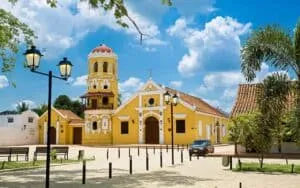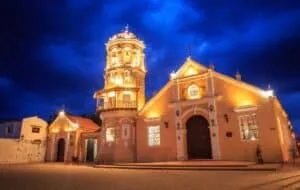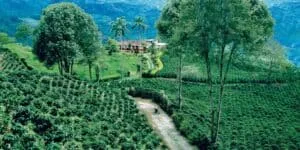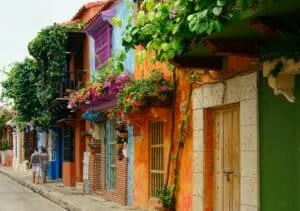
A forgotten city in Northern Colombia
of around 30 000 inhabitants, Santa Cruz de Mompox (commonly known as Mompos) is a beautifully preserved example of 16th-century Spanish colonialism in the Americas. Founded in 1540, it has managed to retain a rich story of Colombian life, its historic centre still filled with original buildings.

Mompos excelled as a trade route, in its heyday, for tobacco, slaves, precious metals, and jewels from the Andes, on their way to the West Coast. As an island city, in the midst of the Magdalena River, it worked as a transportation lifeline bringing economic prosperity back up to the South American Mountain range and all the way down to the ocean. The city’s wealth is shown through its stately architecture, including a royal mint, cobbled squares among whitewashed streets, abundant store-houses, aging churches, and schools.
The city remained prosperous until the early 1900s when sediment accumulated enough to turn the Mompos Arm of the river into standing water. As the river began silting up, large boats were forced to find other routes for trade, leaving Mompos in their wake.
Finally, guerrilla activity in the Magdalena Valley region made Mompos a no-go area for travelers until recently. In its own way, the lack of economic growth contributed to the preservation of the colonial architecture and the magnificent historical center remaining intact, leaving the hidden city largely untouched. Now that the area is once again open to the world, there are few places more ideal for historical and cultural time travel than Mompos.

Visiting Mompos
It takes around 10 hours of private travel, from the capital of Colombia, to reach Mompos. Most of your journey will involve a long rural trip, finalising with a sporadically temperamental river crossing. As visitors begin re-discovering the hidden city, ancient trades are once again flourishing. Fine traditions of jewelry making, artists, and the like, continue to carry on incredible work in the Magdalena Valley’s unique style.
Located almost centrally between the equator and the Tropic of Cancer, the weather in Mompos is extremely hot. It’s certainly advisable to stick to the shade. During the middle of the day, when the sunshine peaks, the already slow city comes to a stop as the population seeks cooler temperatures. The lethargic pace is accepted by its inhabitants, the city only really picking up during April for Holy Week, a Catholic tradition that still prevails throughout most of South America. The sweltering weather, however, does allow for an awesome array of flora and fauna to flourish, from incredible birdlife to sleepy howler monkeys.
For now, Mompos mainly appeals to those who like to get lost in history and wander among incredible sights, relax in scenic locations, soak up cultural ambiance, and absorb the wonderful atmosphere.

Latin America’s famous Gabito
A Colombian novelist, born in 1927, Gabriel Marquez was awarded a Nobel Prize in literature in 1982. His famous brand of magical realism was most likely inspired by his youth in the surrounding lands of northern Colombia. The combination of conventional storytelling and vivid fantasy leads you right to the city of Mompos, where numerous oral traditions and military reminiscences convolute to form fantastic narratives.
Sitting in the historic centre of the city, it’s easy to imagine why he had such a love affair and why he held this place as a living legend. Marquez, in his book ‘The General in His Labyrinth,’ wrote, “Mompox doesn’t exist. We sometimes dream about her, but she doesn’t exist.”
The Magdalena River, including the island city and surrounding towns, heavily informed his writing. These destinations, although there are no physical icons of him, continue to represent his immortality. Read his books and then experience the very legends he transcribes.
Related Stories
@plansouthamerica





